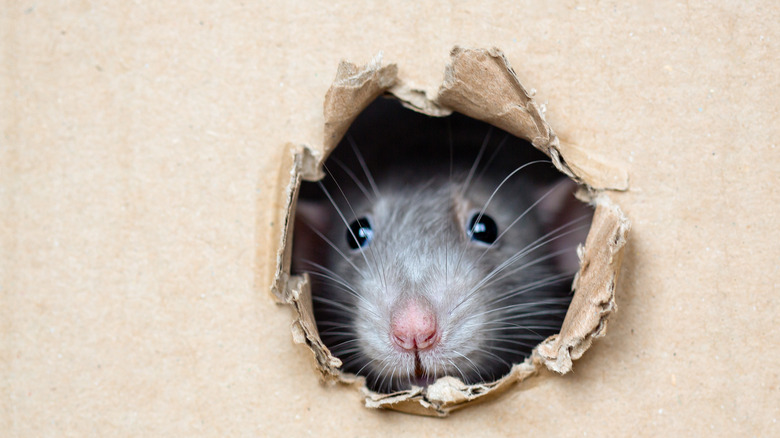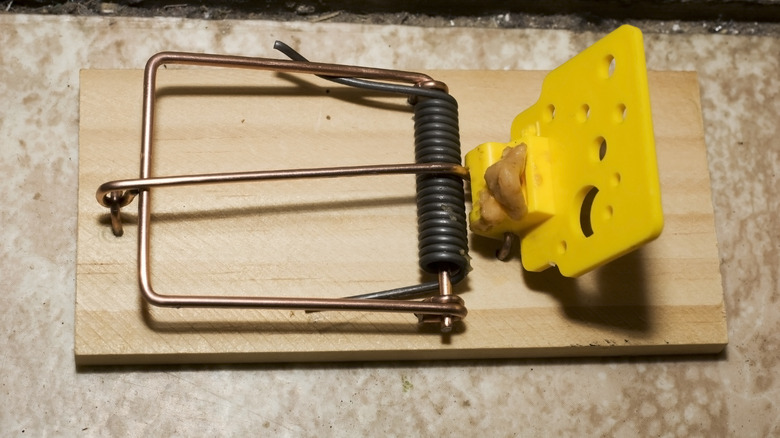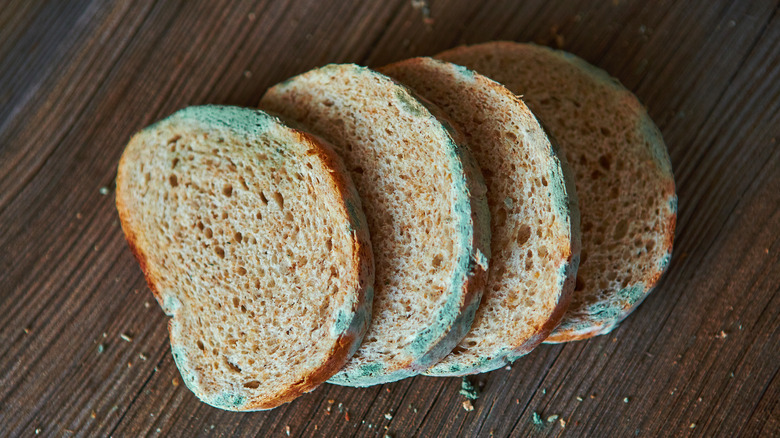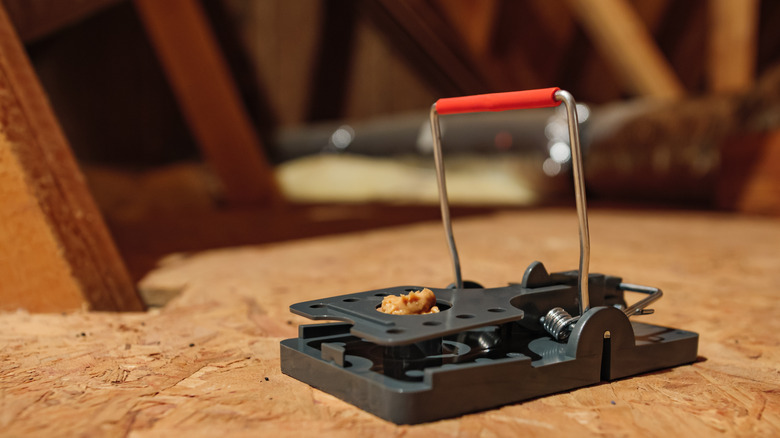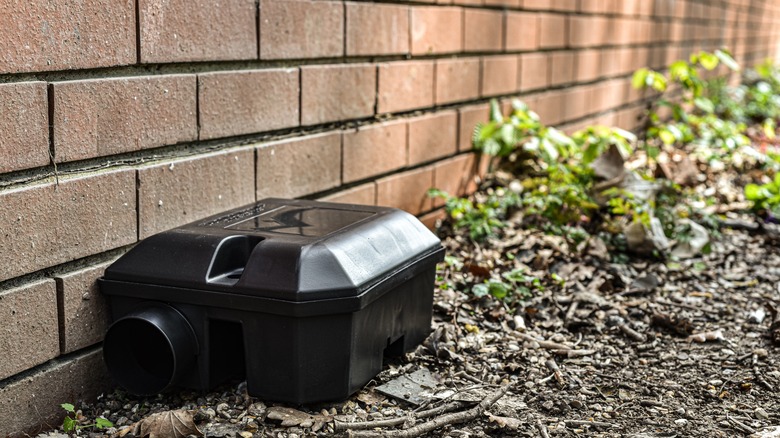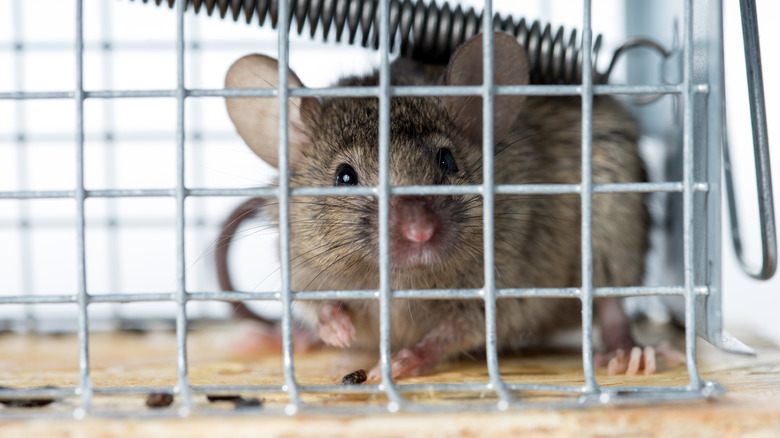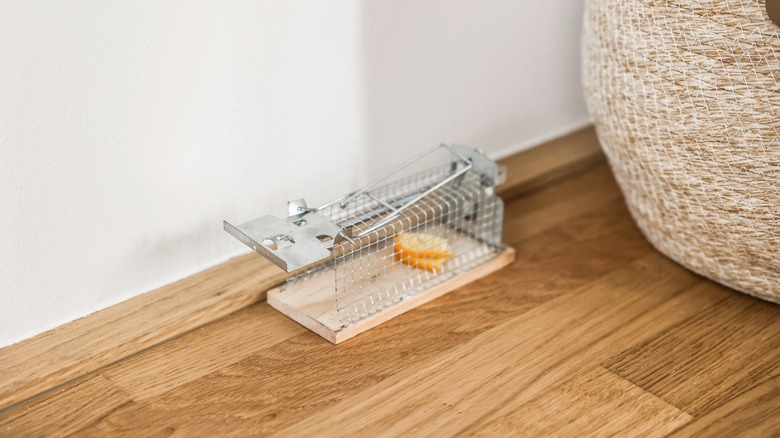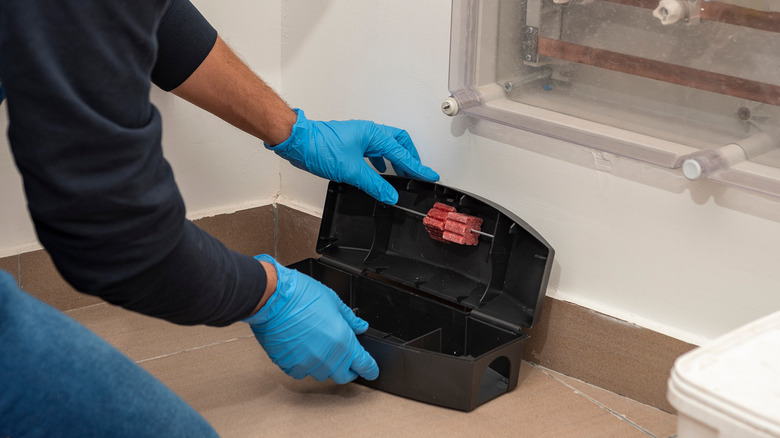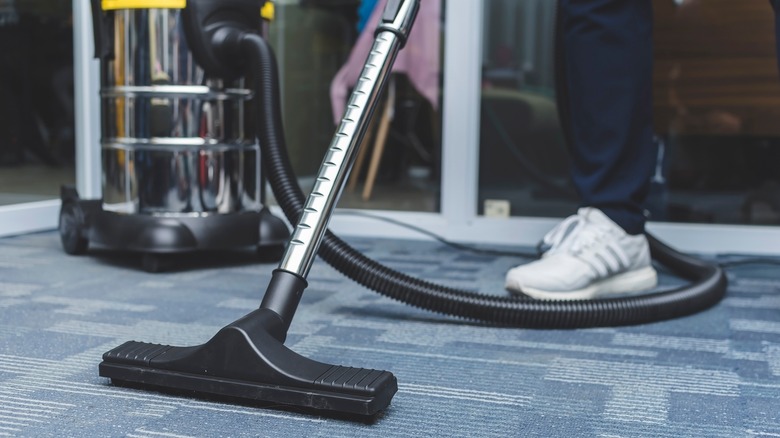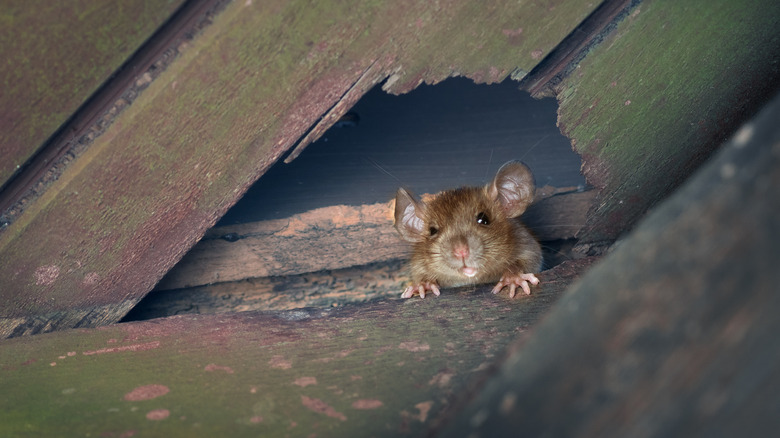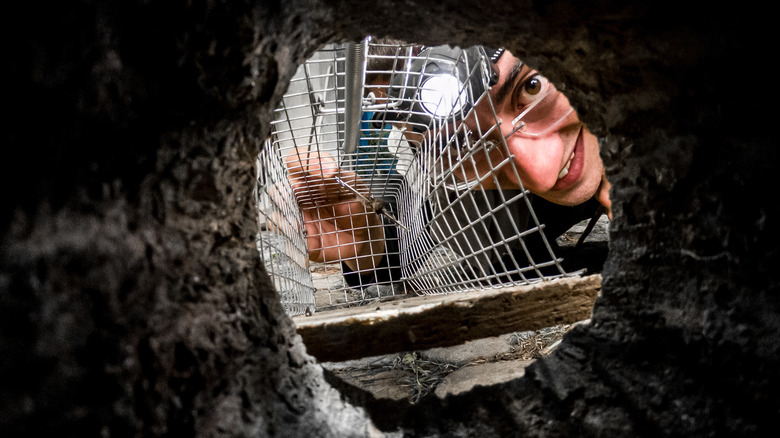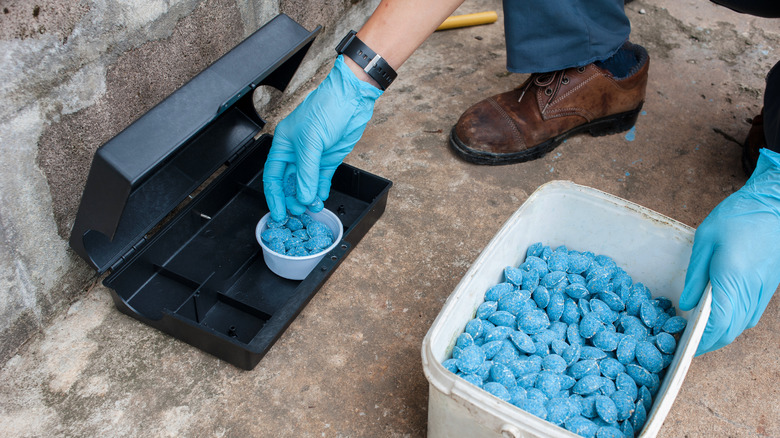13 Reasons Your Mouse Traps Aren't Getting The Job Done
Mice, those tiny, seemingly harmless creatures, can become a homeowner's worst nightmare. As the mercury drops and winter's chill sets in, the search for warmth and sustenance often drives these unwelcome guests indoors. And it's not just the eerie pitter-patter of tiny feet in the dead of night that makes mice a problem. These furry invaders can bring along a host of issues, from health concerns to property damage, making their eviction a top priority for anyone, whether they own or rent.
If you're grappling with a persistent mouse problem, you're not alone. Frustratingly, sometimes it feels like the little critters continue to outsmart you no matter how many traps you set. But before you throw in the towel, read on. We've compiled a list of 13 common reasons why your mouse traps might not be working, so you can finally regain control of your home and keep these unwanted guests at bay.
1. You have improper bait placement
Placing the bait too close to the front can allow mice to snatch it without triggering the trap. This happens as mice are naturally cautious, yet curious creatures. They tend to follow walls and explore your home along familiar paths, like baseboards or the edges of rooms. This is where proper lure placement becomes crucial. Mice are likelier to engage with a trap if you position the bait at its back or just slightly behind the trigger mechanism. This way, they have to work for the treat that's lured them in, and the snap trap can work its magic.
If you place the food at the snap trap's front, then it might not activate quickly enough. Mice are fast and agile, so having the lure closer to the trigger increases the chances of them setting off the device instead of just snatching the food and making off. The key is you want the mice to have to step onto the trigger to reach the bait.
2. You're using the wrong bait
Using a bait that mice aren't attracted to can make your traps less effective. Different types of lures work better than others because mice, like people, have specific preferences when it comes to food. If you're using something that doesn't appeal to them, they may not be motivated to enter the trap. It's kind of like a friend using seafood to lure you out of the house when you're allergic to shellfish. Plus, mice can become cautious and learn to avoid traps if they associate them with foods that don't interest them, making it even more challenging to catch them.
Peanut butter, chocolate, bacon, and cheese are popular options for effective ways to lure in mice. Make sure the food you choose is fresh. Mice have a keen sense of smell, and fresh offerings will always be more attractive than something like moldy, stale bread. Replace it each evening to maintain its effectiveness if it's not taken at first. If one type of bait doesn't seem to work, experiment with different options. Mice preferences can vary, so trying a few other foods may increase your chances of success.
3. You're using too much bait
With too much bait present, mice may be able to access the food without actually triggering the trap. When this happens, they can nibble on the lure outside the device, rendering it useless. Plus, using excessive amounts is not only inefficient but wasteful as well. It can also attract other pests, like ants or roaches, without catching the intended mice, worsening the problem.
To avoid overloading the traps, use a pea-sized portion of bait in the trap. This is usually sufficient to entice a mouse while preventing it from easily accessing the food without triggering the trap. If you used too much in the past, clean the device thoroughly to remove any lingering scent before setting it again. As mice have a keen sense of smell, any residual odor from the old food can put them off from entering.
4. You are ignoring proper placement
If you place traps in areas where mice don't typically travel, you will miss potential opportunities to catch them. Mice tend to follow walls and corners as a protection mechanism, so devices placed in the middle of a room or away from these paths may go unnoticed by them. This also happens as mice are generally cautious and avoid open, exposed spaces. Avoid placing them in the middle of tables, in the center of rooms, or close to cabinet edges.
To fix this, start by observing where you've seen signs of mice in your home. You can look for droppings, gnaw marks on furniture and baseboards, or nesting materials. These are the high-traffic areas where you should focus your placement. Position them parallel to walls, with the baited end facing the wall. This increases the chances of mice encountering the traps, as they will run across them on their evening scurry.
5. You aren't using enough traps
It's always better to overset traps than not have enough. If you only put out a few, you provide limited home coverage. Mice are more intelligent than you might think and can easily avoid them because they are not on their usual routes. They can also quickly learn to avoid them after witnessing a mouse companion getting caught. Mice are cautious creatures, and they do well to remember things.
They may also encounter the traps infrequently if there are not enough of them. If they don't get caught on their first encounter, they may become wary of the traps, making it more challenging to catch them later. If you're dealing with an infestation, a few devices might not be sufficient to catch them all, as most can't be used more than once without being cleaned. In areas with lots of mouse activity, it is always best to use multiple options simultaneously. Use at least one trap for every two to three feet along known mouse travel paths. However, grouping them in clusters away from the wall is typically also less effective.
6. You are choosing the wrong type of trap
Your traps might not be working because you are using the wrong type for your situation. Snap traps are the most common. These are the traditional wooden or plastic traps with a spring-loaded mechanism. They are effective for the quick and humane killing of mice. These are best used in areas with high mouse activity or when you need to quickly eliminate a mouse problem. Next are glue traps, which use adhesive to capture mice when they step onto the trap's surface. These are useful when you cannot use lethal traps, like in homes with children or pets. However, they are less humane and may require you to release the trapped mouse elsewhere as they do not kill the mice. You might also choose an electronic trap. These use a high-voltage shock to quickly and humanely kill mice. They are effective and safe to use, especially in homes with children or pets. However, they might be a bit more expensive than other options.
If you're using the wrong type, it may not effectively capture the mice in your specific situation. For example, a glue trap might not work well if the mice are cautious and avoid stepping onto it. Using the wrong device may also lead to inhumane treatment of mice or may not align with your ethical concerns, especially if you don't plan to kill the mice.
7. You are not securing the traps
If you don't properly secure mouse traps, they can easily tip over or move. This can scare the mice away, making them ineffective. A trap might also tip over or move if a mouse grabbed the bait. When it runs off unharmed, any other mice that come out that night won't encounter your trap, as it's been knocked out of their path.
Securing traps is essential to ensure they stay where they are supposed to be, increasing the chances of successful trapping. You can do this by using bait stations designed for traps or by attaching traps to stable surfaces. Start by placing the trap along a wall or in a location where you've noticed mouse activity. Next, use a small piece of double-sided tape or adhesive putty to attach the trap to the floor. Additionally, you can place heavy objects or boxes around the trap to create a barrier, guiding the mouse toward the trap's trigger.
8. You are not checking traps regularly
Neglecting to check mouse traps regularly is a common oversight in rodent control. This is especially true if you aren't trying to get rid of mice in your kitchen but in your attic or garage — places you might not check every day. However, when you leave them unchecked for an extended period, any caught mice may start to decompose. This results in foul odors that permeate the surrounding area.
This not only creates an unpleasant living environment for you (as a stinky attic will eventually stink up the entire house) but also poses potential health hazards. This is because decaying rodents release harmful bacteria and pathogens. As much as you will want to avoid a space that smells like a rotting mouse, other mice might not. The carcasses will also start to attract flies, cockroaches, and other pests, leaving you with a secondary infestation.
In addition, failing to inspect your devices promptly can lead to mice becoming stuck but not killed, causing unnecessary suffering for the trapped animals. Regular checks allow for swift disposal of captured mice, ensuring both a more humane approach to pest control and the prevention of odor and health issues. Be sure to check your traps at least once a day to avoid making more work for yourself.
9. You are ignoring hygiene
Maintaining proper hygiene in the vicinity of mouse traps is important to make sure they work properly. Surprisingly, a dirty environment can deter mice from approaching traps. Mice are naturally suspicious creatures. If they detect signs of human activity or a contaminated area around the devices, they may avoid them altogether. Keeping the site clean not only makes the lures more attractive to mice by eliminating any distractions on their journey to the bait, but also makes sure that the traps remain free from obstructions.
Plus, your scent can transfer onto the devices during handling, potentially making them less appealing to rodents. To counter this, wear gloves when setting, loading, or checking traps to minimize the chances of your scent repelling mice. You'll likely need a new set each time, so you should buy a small box of disposable gloves. By prioritizing hygiene and cleanliness, you create a more conducive environment for successful mouse trapping.
10. You are setting the traps too soon
Setting mouse traps too soon after cleaning an area infested with rodents can indeed hinder their effectiveness. This is because mice are creatures of habit. They tend to avoid unfamiliar or recently disturbed environments. So, if you've just cleaned or reorganized an area and immediately placed traps, the mice might be hesitant to venture back into that space. Plus, if you rush to set lures right after a deep cleaning, you may inadvertently mask the scent of their previously established trails or any potential attractants, like food crumbs.
Instead, it is essential to give the mice a bit of time to regain their confidence and re-establish their regular paths before setting traps. This could be a few days. Allowing a brief waiting period increases the likelihood that the mice will return to their usual routes. This makes them more likely to encounter and interact with your devices, ultimately leading to a higher success rate.
11. You are not sealing the entry points
Failure to seal entry points when setting mouse traps is a critical oversight. It can perpetuate a cycle of ineffective, unending trapping. This is because mice are highly adept at finding their way indoors through tiny cracks and openings in walls, floors, and foundations. If these entry points are not correctly sealed, new mice can (and most definitely will!) continue infiltrating your space even if you successfully trap a few individuals. Identifying and closing these entry points as part of your overall pest control strategy is crucial. By doing so, you not only prevent additional mice from entering but also force the existing ones to rely on the available traps for sustenance, increasing the chances of catching them. It's a comprehensive approach to mouse control that addresses the root cause of the infestation, ensuring a more effective and long-lasting solution rather than just a temporary fix.
Common spots are small gaps and cracks in a home's foundation, walls, or siding. Mice can squeeze through openings as small as a quarter of an inch. Mice also find their way inside through damaged roofing, vents, or openings leading into attics and crawl spaces. You can also check uncapped vents and chimneys as mice climb up and enter through these openings, seeking warmth and shelter.
12. You are only trapping every once in a while
Consistency in trapping is crucial for effective mouse control. Mice are social animals that live in colonies, so catching just one mouse doesn't necessarily mean the problem is solved. If you trap sporadically or only when you notice signs of mice, you might miss out on capturing all the mice in the colony.
Unfortunately, mice also reproduce rapidly, and an unchecked infestation can quickly grow out of control. Regular and ongoing trapping efforts are necessary to ensure you catch all the mice and prevent them from breeding and multiplying. You should lay out devices every night for the first few nights as soon as you notice the mouse problem. When the lures have laid empty for at least two nights (and you've stopped noticing other signs of mice, like droppings and chewed items), it's time to stop. Maintaining a consistent routine increases your chances of successfully addressing the entire mouse population and preventing future infestations from taking hold in your space.
13. You are ignoring professional help
When your self-set mouse traps consistently fail to yield results, it's a clear sign that the infestation might be more challenging than initially thought. If this happens to you, and you've done troubleshooting with every item on this list, it might be time to call in the professionals. Sometimes mice just get the better of us, and that's okay.
Pest control professionals have the expertise and experience to get rid of unwanted rodents fast. Sometimes, mice can outsmart conventional traps, or their numbers may be too great for DIY efforts to handle. Pest control experts can thoroughly assess your property, identify the root causes of the infestation, and implement targeted and comprehensive solutions to eradicate mice from your environment. They also have access to a variety of baits and traps that are not readily available to the general public. Ignoring professional help when faced with persistent trapping failures may only prolong the issue and result in further damage or health risks. Fighting mice on your own can also take up a lot of brain space and waste a lot of money. Sometimes, it's just better to ask for help.
